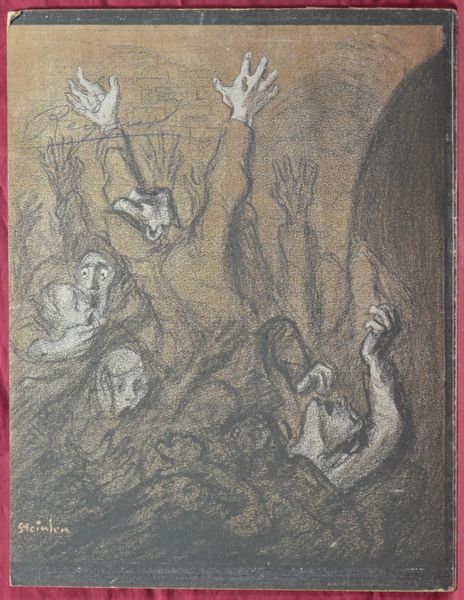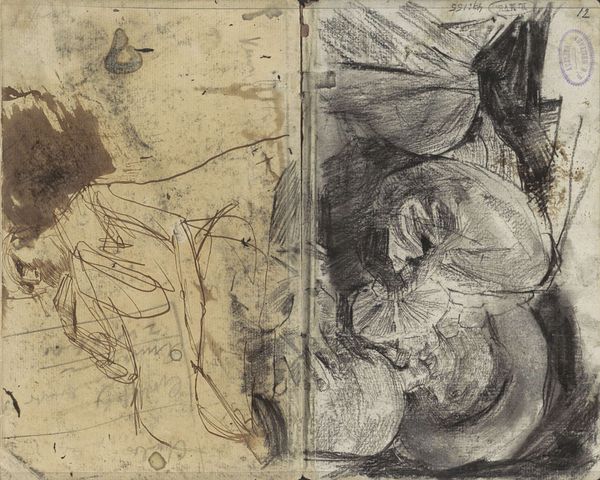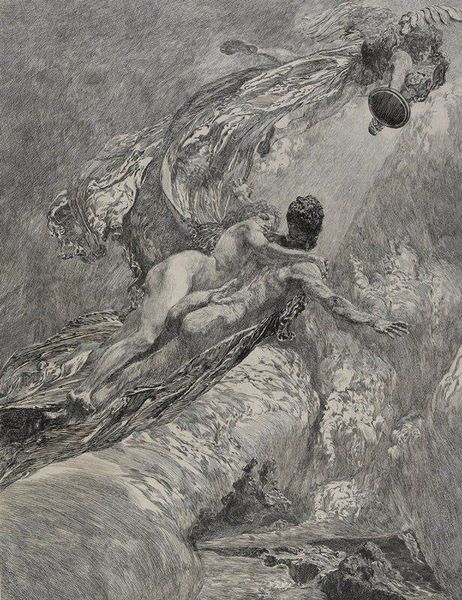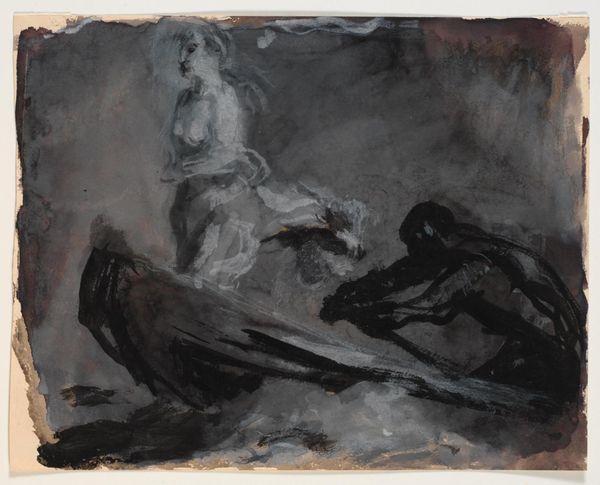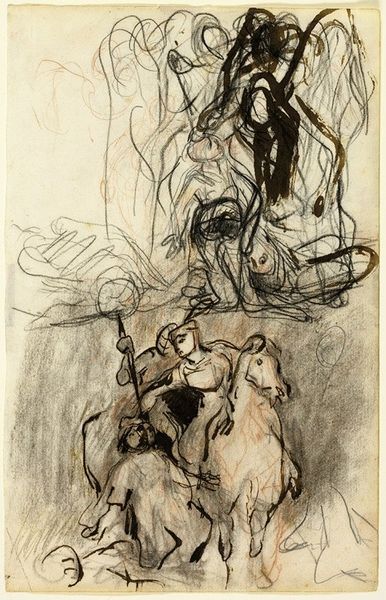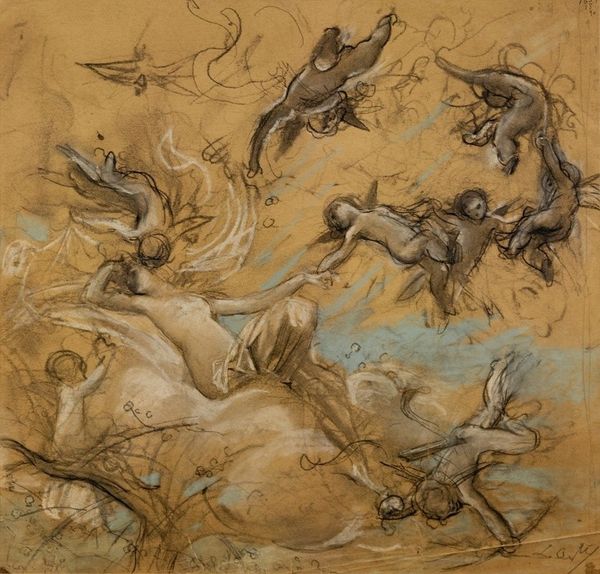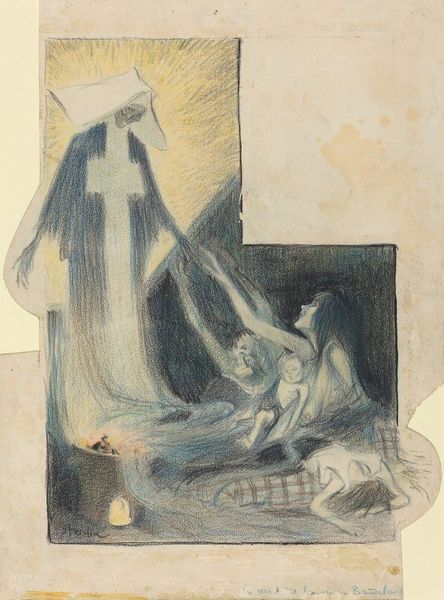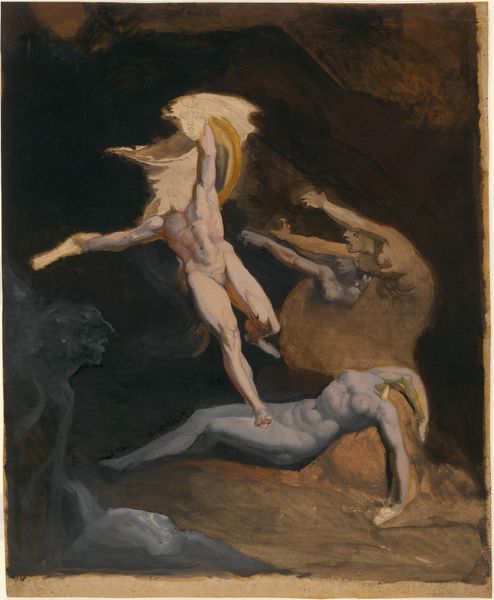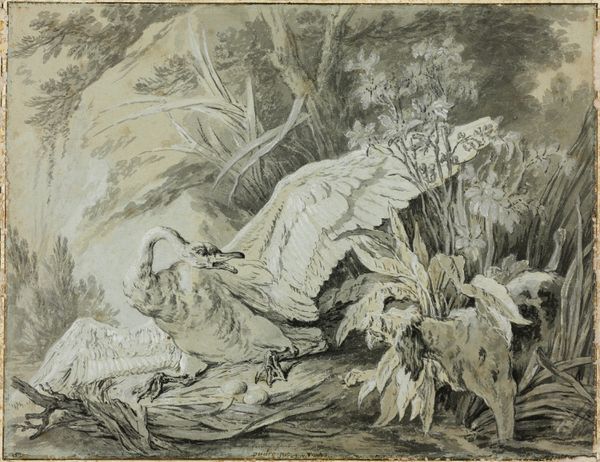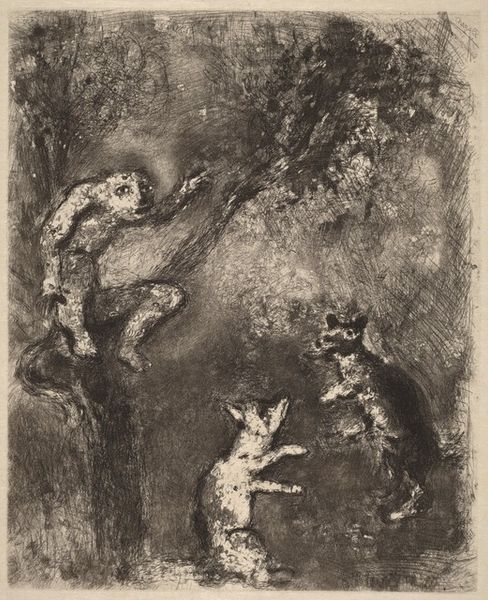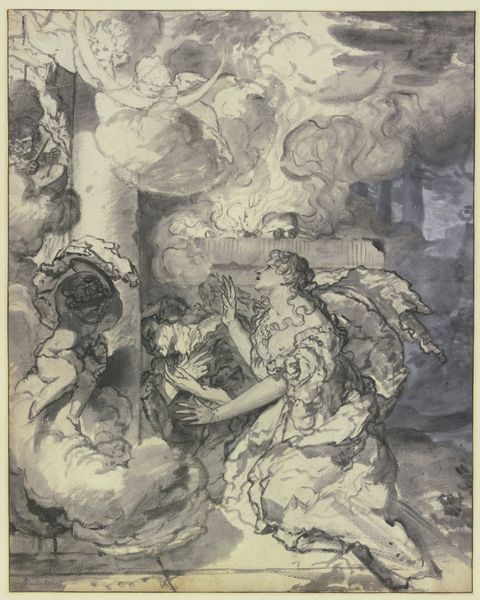
drawing, charcoal
#
drawing
#
landscape
#
charcoal drawing
#
figuration
#
charcoal art
#
romanticism
#
charcoal
#
charcoal
#
nude
Copyright: Public Domain: Artvee
Editor: So here we have "Alberich and the Rhinemaidens," a charcoal drawing by Luc-Olivier Merson. The swirling composition, all rendered in these earth tones, makes me think of a hidden world. What strikes you about it? Curator: It's the materiality itself that interests me. Charcoal, a humble material born of burned wood, is here employed to depict a scene of mythological theft and frustrated desire. Look closely, what kind of labour might have gone into making such a large work with such delicate tools? How do we equate that human toil with the exploitation portrayed within the narrative? Editor: That's a good point. We often separate the creation from the story, but Merson is literally making a valuable artwork *about* the theft of value. Curator: Precisely! Consider too the *scale* of production versus consumption. A charcoal drawing, however impressive, isn't as "precious" as, say, an oil painting on canvas. Does that impact how the viewer engages with themes of greed and possession in Wagner’s “Ring” cycle? Or could this be a preliminary study for another, 'higher' artform? Editor: It certainly changes the tone. A massive, elaborate painting might almost celebrate the opulence, but the charcoal feels more like a commentary. What about the contrast between the rough, sketchy lines and the smoothness of the figures? Curator: Ah, the duality continues! The raw, almost industrial, nature of the medium contrasts with the idealized bodies of the Rhinemaidens, figures usually associated with beauty and purity. This is no simple illustration, is it? This charcoal dust allows Merson to comment on commodity, labour and myth all in one work. Editor: This makes me look at not just the "what" of the image, but really dig into the "how" and the "why" it was created this way. Curator: Exactly. By focusing on the material conditions, the means of production, we unlock new layers of meaning. Seeing beyond just subject matter, toward the artist's choices in *making* the piece, and those implications on culture.
Comments
No comments
Be the first to comment and join the conversation on the ultimate creative platform.

